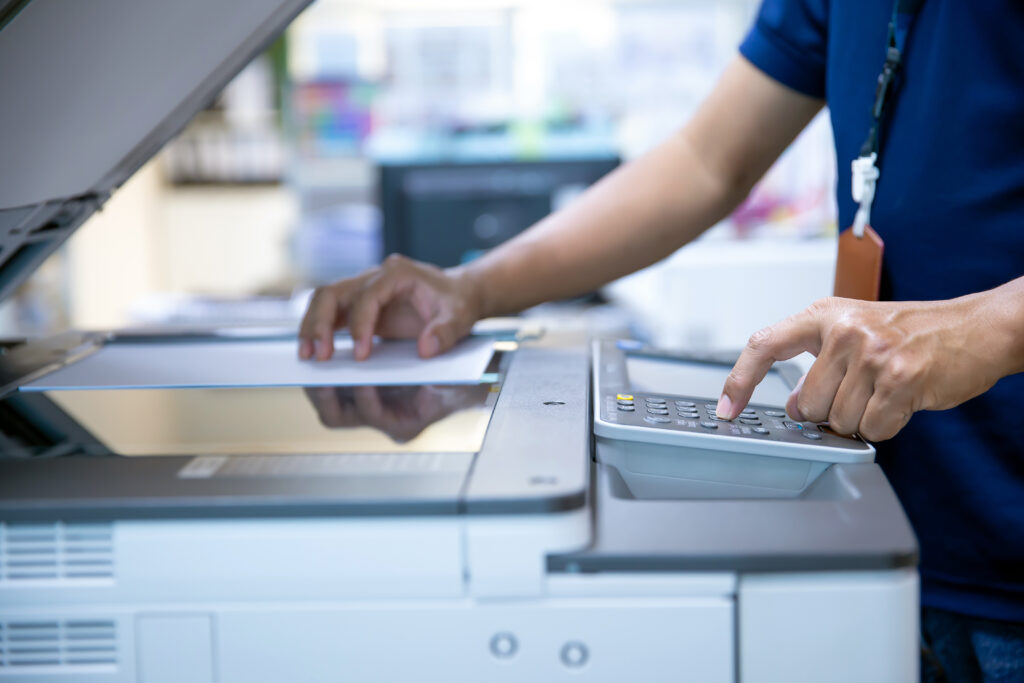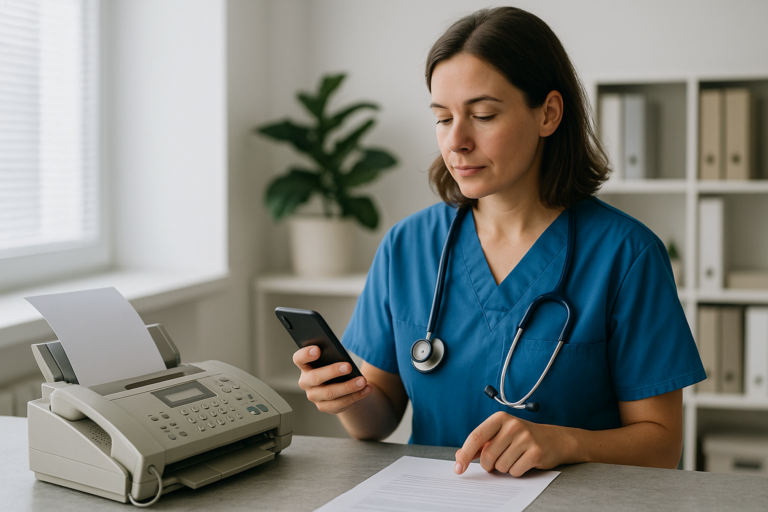Let’s talk about fax machines
“1980 called, and it wants its fax machine back” isn’t as funny as it sounds.
Plenty of ready criticisms are available about the clunky devices: they take up valuable desk or floor space and require a phone line. Manual dialing is time-consuming, especially when there’s a real chance you’ll get a busy signal and have to start all over again. Paper and toner constantly need to be resupplied and refilled, and when repairs are needed, parts are becoming harder to find, leaving offices without the communication tool it relies upon.
For all the very real pain points that faxing represents, many medical offices still rely on them — after all, they’re familiar. They’re a HIPAA-compliant method of transmitting private patient information. But HIPAA-compliant VoIP telephony solutions that include eFax will save you money, improve security, and make your office more efficient. You’ll get information to the right people quickly, eliminate digitizing, integrate your data, and streamline your communication processes.
Why Healthcare Loves Faxing
At first glance, it seems strange that healthcare — an industry that embraces innovation — still relies on what many see as dinosaur technology. But there are good reasons why medical offices, hospitals, pharmacies, and insurers are still faxing patient information.
First, it’s a fairly straightforward piece of effective and generally reliable equipment. Doctors and staff know how to use it, and that comfort factor counts for a lot. Plus, faxing does not require software compatibility between offices or organizations, and it meets HIPAA privacy standards that only require that “reasonable safeguards” be implemented. It’s less exposed than cloud file sharing or email and isn’t vulnerable to password leaks or data breaches.
Where Old-School Faxing Becomes a Problem
For all of the advantages that faxing still offers, it is increasingly being recognized as a problem. It requires power, a dedicated phone line, ink, paper, maintenance, and repairs, and it’s also a slow technology trying to keep up with a fast-paced environment.
We all know the feeling of needing information on a patient immediately. When every second counts, the time it takes to walk to a fax machine’s physical location, input a number, then send patient records a page at a time — all with the possibility of encountering a busy signal, a paper jam, another patient’s records in the midst of transmission — seems interminable and maddening. Though an extreme example, the potential bottlenecks caused by fax machines were succinctly profiled by the New York Times during the worst days of the COVID-19 pandemic when results sent via fax by laboratories overwhelmed public health departments and significantly delayed the communication of essential data.
The technology is slow, and the security of data sent via old-school fax is far from guaranteed. If your office uses a paper-based dial-up fax, you’re dealing with documents that may be sitting out in the open unattended while waiting to transmit or be received. Phone numbers can easily be misdialed, and private information inadvertently be sent to and seen by the wrong person. Plus, once transmitted, the information is not encrypted (though this is admittedly less of a problem than a widespread data breach.)
Paper faxing also means that somebody in your office must scan a received printout to be stored electronically in your EHR system, then filed in a physical filing cabinet. The amount of paper that’s consumed using traditional faxes is enormous: it’s estimated to consume over 200 billion sheets of paper every year, representing both expense and waste.
Bringing Faxing into the Digital Age
For all the real problems posed by faxing, the superior security it provides over email means that it remains healthcare’s most popular form of transmitting communication.
But that doesn’t mean that it can’t be improved upon. HIPAA-compliant efax technology, like that offered by RingRX, lets you keep on faxing – and even keeping your old fax machine – while revolutionizing your office’s workflow.
Imagine being able to receive faxes in electronic format. Information can be faxed anywhere, using any device simply by accessing your portal, uploading documents, and hitting send. The files are encrypted whether you’re sending medical records, prescription refills, or inter-office messages. In contrast, they’re being sent and received and are only accessible by whoever has access to the email address you’ve input or the secure portal they’ve logged into. It scans received information for transfer into your EHR, shifting that task to a mouse click.
It’s a 100% HIPAA-compliant answer that saves time, boosts security, increases efficiency, and eliminates paper and toner expenses and waste.
Whether you prefer to hold on to your existing traditional fax machines or step up to RingRx’s advanced web-based phone system, our HIPAA-compliant e-fax solution eliminates all of the headaches and hassles of old-school fax while maintaining the security your practice needs. It’s an easy and reliable way to send and receive records and messages that ensures HIPAA compliance, increases office efficiency, and reduces costs.
RingRx is committed to helping you improve your office operations and improve your patients’ care and experience. Contact us today to learn more about how our healthcare communications, e-fax, and telephone technology will empower your practice.





